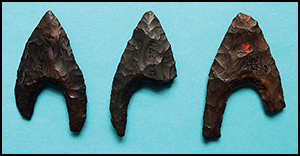Crossref Citations
This article has been cited by the following publications. This list is generated based on data provided by
Crossref.
Shirai, Noriyuki
2017.
Teething problems in cereal cultivation in prehistoric Egypt: a restudy of Fayum Neolithic sickle blades.
Azania: Archaeological Research in Africa,
Vol. 52,
Issue. 2,
p.
209.
Sallam, Emad S.
Fathy, Esraa E.
Ruban, Dmitry A.
Ponedelnik, Alena A.
and
Yashalova, Natalia N.
2018.
Geological heritage diversity in the Faiyum Oasis (Egypt): A comprehensive assessment.
Journal of African Earth Sciences,
Vol. 140,
Issue. ,
p.
212.
Holdaway, Simon
Phillipps, Rebecca
Emmitt, Joshua
Linseele, Veerle
and
Wendrich, Willeke
2018.
The Desert Fayum in the twenty-first century.
Antiquity,
Vol. 92,
Issue. 361,
p.
233.
Bunbury, Judith
2019.
The Nile and Ancient Egypt.
Shirai, Noriyuki
2020.
Resisters, Vacillators or Laggards? Reconsidering the First Farmer-Herders in Prehistoric Egypt.
Journal of World Prehistory,
Vol. 33,
Issue. 4,
p.
457.
McDonald, Mary M.A.
2020.
The Mid-Holocene bifacial projectile points from Dakhleh Oasis, Egypt: Implications concerning origins of the knapping tradition, changing hunting patterns, the local neolithic, and African cultural independence.
Journal of Anthropological Archaeology,
Vol. 59,
Issue. ,
p.
101199.
Emmitt, Joshua
Phillipps, Rebecca
Koopman, Annelies
Barrett, Matthew
Wendrich, Willeke
and
Holdaway, Simon
2021.
Kom W and X Basin: Erosion, Deposition, and the Potential for Village Occupation.
African Archaeological Review,
Vol. 38,
Issue. 1,
p.
95.
Khalaf, Ezz El Din Abdel Hakim
and
El-Kheir, Gebely Abu
2022.
The Geological Heritage and Sustainable Development Proposed for the Project Geopark: an Example from Gabal Qatrani, Fayoum Depression, Western Desert, Egypt.
Geoheritage,
Vol. 14,
Issue. 1,
Shirai, Noriyuki
2022.
Can One See the Wood for the Trees in Prehistoric Egypt? A Study of Fayum Neolithic Axes.
Lithic Technology,
Vol. 47,
Issue. 1,
p.
52.
Shirai, Noriyuki
2023.
Kom W and Z Basin: Surface Artifact Collection, Culture History, and the Argument Over Village Occupation.
African Archaeological Review,
Vol. 40,
Issue. 1,
p.
205.
Guyot, Frédéric
2024.
The Nile Delta.
p.
105.





